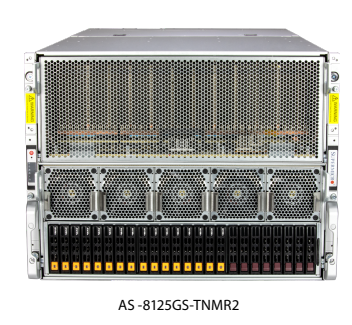The current buildout of the artificial intelligence infrastructure is an event as big as the original launch of the internet.
AI, now mainly an expense, will soon be monetized. Thousands of AI applications are coming.
And AMD plans to embed AI across its entire product portfolio. That will include components and software on everything from PCs and edge sensors to the largest servers used by the big cloud hypervisors.
These were among the comments of Mark Papermaster, AMD’s executive VP and CTO, during a recent fireside chat hosted by stock research firm Arete Research. During the hour-long virtual presentation, Papermaster answered questions from moderator Brett Simpson of Arete and attending stock analysts. Here are the highlights.
The overall AI market
AMD has said it believes the total addressable market (TAM) for AI through 2027 is $400 billion. “That surprised a lot of people,” Papermaster said, but AMD believes a huge AI infrastructure is needed.
That will begin with the major hyperscalers. AWS, Google Cloud and Microsoft Azure are among those looking at massive AI buildouts.
But there’s more. AI is not only in the domain of these massive clusters. Individual businesses will be looking for AI applications that can drive productivity and enhance the customer experience.
The models for these kinds of AI systems are typically smaller. They can be run on smaller clusters, too, whether on-premises or in the cloud.
AI will also make its way into endpoint devices. They’ll include PCs, embedded devices, and edge sensors.
Also, AI is more than just compute. AI systems also require robust memory, storage and networking.
“We’re thrilled to bring AI across our entire product portfolio,” Papermaster said.
Looking at the overall AI market, AMD expects to see a compound annual growth rate of 70%. “I know that seems huge,” Papermaster said. “But we are investing to capture that growth.”
AI pricing
Pricing considerations need to take into account more than just the price of a GPU, Papermaster argued. You really have to look at the total cost of ownership (TCO).
The market is operating with an underlying premise: Demand for AI compute is insatiable. That will drive more and more compute into a smaller area, delivering more efficient power per FLOP, the most common measure of AI compute performance.
Right now, the AI compute model is dominated by a single player. But AMD is now bringing the competition. That includes the recently announced MI300 accelerator. But as Papermaster pointed out, there’s more, too. “We have the right technology for the right purpose,” he said.
That includes using not only GPUs, but also (where appropriate) CPUs. These workloads can include AI inference, edge computing, and PCs. In this way, user organizations can better manage their overall CapEx spend.
As moderator Simpson reminded him, Papermaster is fond of saying that customers buy road maps. So naturally he was asked about AMD’s plans for the AI future. Papermaster mainly deferred, saying more details will be forthcoming. But he also reminded attendees that AMD’s investments in AI go back several years and include its ROCm software enablement stack.
Training vs. inference
Training and inference are currently the two biggest AI workloads. Papermaster believes we’ll see the AI market bifurcate along their two lines.
Training depends on raw computational power in a vast cluster. For example, the popular ChatGPT generative AI tool uses a model with over a trillion parameters. That’s where AMD’s MI300 comes into play, Papermaster said, “because it scales up.”
This trend will continue, because for large language models (LLMs), the issue is latency. How quickly can you get a response? That requires not only fast processors, but also equally fast memory.
More specific inferencing applications, typically run after training is completed, are a different story, Papermaster said, adding: “Essentially, it’s ‘I’ve trained my model; now I want to organize it.’” These workloads are more concise and less demanding of both power and compute, meaning they can run on more affordable GPU-CPU combinations.
Power needs for AI
User organizations face a challenge: While running an AI system requires a lot of power, many data centers are what Papermaster called “power-gated.” In other words, they’re unable to drive up compute capacity to AI levels using current technology.
AMD is on the case. In 2020, the company committed itself to driving a 30x improvement in power efficiency for its products by 2025. Papermaster said the company is still on track to deliver that.
To do so, he added, AMD is thinking in terms of “holistic design.” That means not just hardware, but all the way through an application to include the entire stack.
One promising area involves AI workloads that can use AI approximation. These are applications that, unlike HPC workloads, do not need incredible levels of accuracy. As a result, performance is better for lower-precision arithmetic than it is for high-precision. “Not all AI models are created equally,” Papermaster said. “You’ll need smaller models, too.”
AMD is among those who have been surprised by the speed of AI adoption. In response, AMD has increased its projection of AI sales this year from $2 billion to $3.5 billion, what Papermaster called the fastest ramp AMD has ever seen.
Do more:












